The Ultimate Guide on How to Visit Tibet [Updated 2024]
Embarking on a Tibet travel adventure is a journey of a thousand miles, an experience unlike any other.
Travelers to Tibet can immerse themselves in the rich and vibrant Tibetan culture by exploring the colorful monasteries, attending traditional festivals, and interacting with the friendly locals. From the unique architecture of the Potala Palace in Lhasa to the traditional Tibetan homes in the countryside, visitors can witness the region's rich history and cultural heritage. In addition, Tibet offers a great overland travel experience. Travelers can embark on a thrilling journey across the vast Tibetan Plateau, driving through winding mountain roads and high-altitude passes, and witnessing breathtaking landscapes along the way. The famous Friendship Highway, which connects Lhasa to Kathmandu, is one of the most popular overland routes in Tibet, offering travelers a unique opportunity to experience the region's natural beauty, including a visit to Mount Everest Base Camp (north face). For trekking enthusiasts, with its stunning landscapes, dramatic mountain ranges, ancient monasteries and hospitable nomad families, Tibet is an ideal destination for trekking. One of the most popular ones is Ganden Samye trek. Overall, Tibet is a destination that offers a truly unforgettable adventure.
Is Tibet open for international tourists in 2024?
Yes, you can travel to Tibet in 2024. Tibet has officially reopened its borders to international travelers on April 7th 2023, including the Gyirong border between Tibet and Nepal. This is a wonderful opportunity for overseas visitors to explore the enchanting land of Tibet. Our updated ‘Ultimate Guide on How to Visit Tibet’ is packed with essential information to help anyone planning their Tibet adventure in the upcoming months. Contact us for your Tibet tour planning today!

If you're interested in visiting Tibet, you'll need to learn more about this incredible Tibetan Plateau and consider some crucial factors before embarking on your journey. This Ultimate Tibet travel guide aims to provide you Everything You Need to Know about Your Travel to Tibet:
Table of Contents
- Brief Tibet Introduction
- Independent Tibet travel not permitted for international tourists
- Tibet Permit and Chinese Visa
- Best time to visit Tibet
- How to get to Tibet
- Tibet tourist Map
- How many days do you need to visit Tibet
- What to visit in Tibet
- Trekking in Tibet
- Visiting Tibet during Festivals
- Altitude sickness and how to stay healthy in Tibet
- How is the accommodation in Tibet
- What to eat and drink in your Tibet Tour
- How much does it cost to travel to Tibet
- What to pack for your Tibet Travel
- Other Practical Things to Know About Tibet
- Things to Do and Not to Do When Visiting Tibet
- Download your Tibet travel checklist
A Brief Tibet Introduction
Tibet is an autonomous region situated on the Tibetan Plateau, often called the 'Roof of the World'. Located in the Himalayas in western China, Tibet has an average elevation of over 4,500 meters (14,764 feet), making it the highest plateau in the world. The highest point in Tibet is the world-famous Mount Everest, with an elevation of 8,848 meters (29,029 feet) above sea level.
Lhasa, the capital city of Tibet, is located at an elevation of 3,650 meters (11,975 feet) above sea level and is renowned for its distinctive culture, spiritual practices, and breathtaking natural beauty. Tibet is home to around 3 million people, with the majority belonging to the ethnic Tibetan community.
Tibet shares its borders with various regions and countries. Nepal lies to the south of Tibet, and it shares a long boundary with the Tibet. Visitors can access Tibet from Nepal, and many of them choose traveling by land to explore popular attractions like Mount Everest and Mount Kailash. Additionally, flights from Kathmandu to Lhasa are available, offering a convenient and faster means of transportation to reach Tibet's capital city.
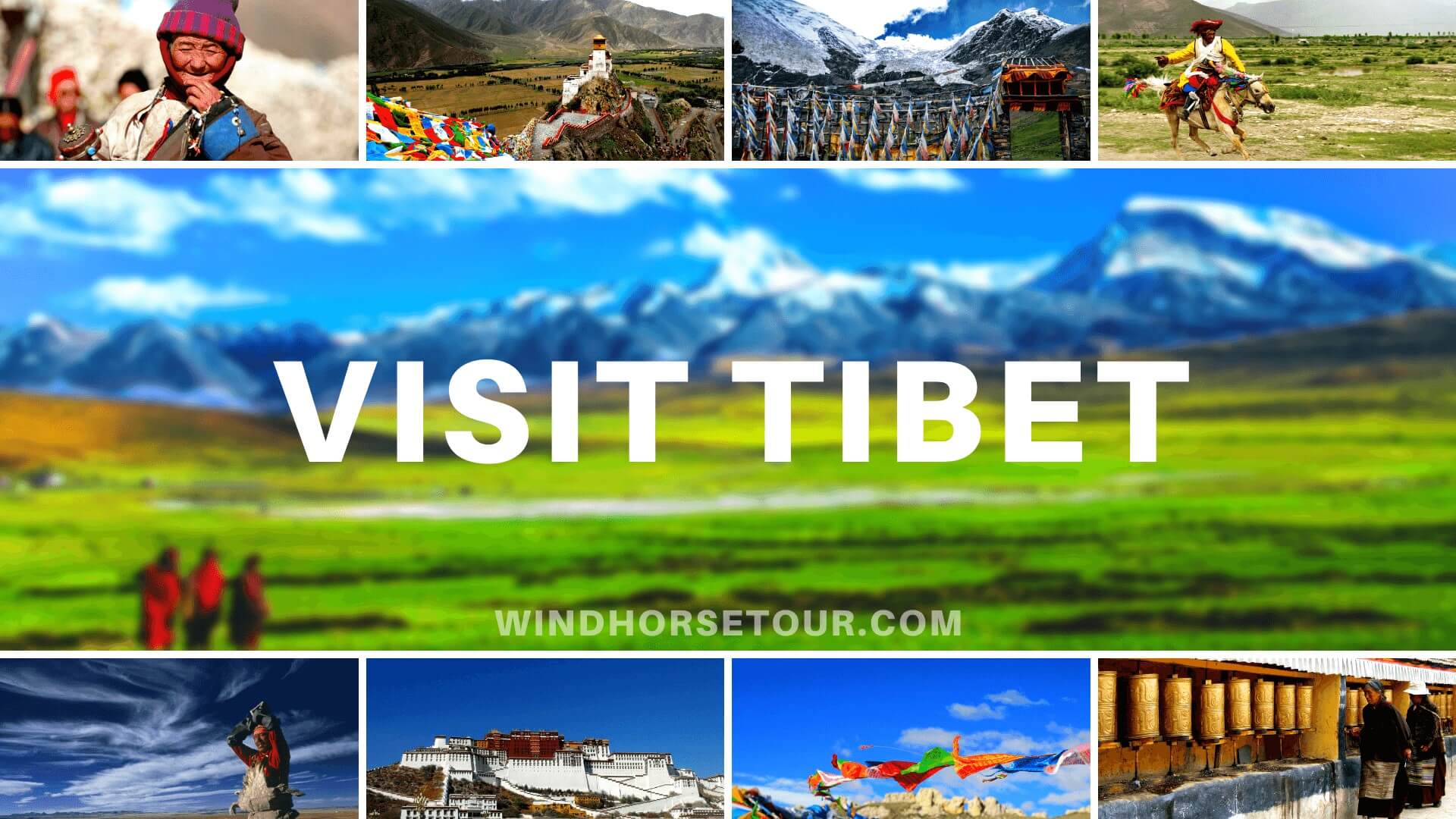
To the east of Tibet is the Chinese province of Sichuan, which has a large Tibetan population. Several roads connect Tibet with Sichuan, including the famous Sichuan-Tibet Highway.
To the northeast of Tibet is the Chinese province of Qinghai, which also has a significant Tibetan population. The Qinghai-Tibet Railway connects Lhasa with the Qinghai-Tibet Plateau and is one of the highest railway lines in the world.
To the southeast of Tibet is the Chinese province of Yunnan, which also has a small Tibetan population. There are several roads that connect Tibet with Yunnan, including the famous Yunnan-Tibet Highway.
Tibet is famous for its breathtaking landscapes, including Mount Everest, Mount Kailash, the Potala Palace, and numerous Buddhist monasteries and temples. Tibetan Buddhism is the predominant religion in Tibet, and it is deeply intertwined with Tibetan culture and history. The Tibetan language is also unique and complex, belonging to the Tibeto-Burman language family.
The region's economy is mainly based on agriculture and tourism. Despite its challenges, Tibet remains a popular destination for adventure travelers and those interested in Tibetan culture and history. When traveling in Tibet, proper acclimatization is essential to prevent altitude sickness, and visitors should also be aware of the travel restrictions and regulations that are in place. Visiting Tibet with a local guide can provide insight into Tibetan culture and traditions.
Independent Tibet Travel is not Permitted for International Tourists
Unlike most travel destinations, independent travel is not allowed in Tibet (referring to T.A.R) for foreign passport holders according to the Tibet travel regulations. Therefore, travelers cannot visit Tibet on their own and must be accompanied by a licensed tour guide during their visit. To comply with these regulations, travelers must book their tour in advance through a licensed travel agency, which will help them arrange the required Tibet permit and China group visa (if entering Tibet from Nepal) in advance. Throughout their trip in Tibet, a licensed guide will accompany them.
A Tibet tour with a private guide and vehicle can be expensive, especially for solo travelers or small groups looking for a more in-depth tour. In such cases, travelers can opt for organized Tibet group tours to make the cost more affordable. Regardless of the tour option chosen, it's crucial to follow the travel regulations in Tibet to ensure a safe and enjoyable trip.
Tibet Permit and Chinese Visa
Chinese visa
When planning a trip to Tibet, it's important to have a valid Chinese visa since Tibet is part of China. If you plan to enter Tibet from mainland China, you'll need to apply for an individual Chinese tourist visa in your home country. To assist with the visa application process, our travel agency can provide you with a China travel Invitation Letter. Once you have your Chinese visa, you'll need to send a scanned copy of it along with your passport data page to your travel agency, which will then apply for the Tibet Permit on your behalf.
However, if you plan to travel to Tibet via Nepal, you don't need to obtain a Chinese visa in advance. Instead, your travel agency will help you apply for a Group China visa at the Chinese embassy in Kathmandu with your original passport upon your arrival in Kathmandu. This process usually takes 3-5 working days, and it is important to plan a few days in Nepal to accommodate this visa application process before heading to Tibet.
It is worth noting that China started to offer short visa-free policies to certain countries post-pandemic, aiming to boost tourism and simplify entry for business travelers and tourists on brief stays. China's 15-30 day visa-free policy allows eligible travelers from select countries, including 11 in Europe and Malaysia, to enter and stay in China without a visa for up to 15 days, and up to 30 days for travelers from Singapore and Thailand.

Tibet Travel Permit
The Tibet Travel Permit also called TTB permit is the most important document needed before entering Tibet. Without it, foreign tourists are not permitted to enter Tibet. It's essential to have the original one if you take the flight into Tibet or land travel to Tibet, a copy could work if you enter Tibet by train.
The Tibet Travel Permit is issued by the Tibet Tourism Bureau (TTB) and is required for all foreign travelers and Taiwaness. Journalists, diplomats, and individual professional media photographers must apply through the diplomatic channels of their countries or the company they represent.
The Tibet Travel Permit is a two-page document, with the first page featuring the 'permit' that includes the tibet tour operator agency name that the traveler has booked a trip with. Additionally, this page contains the tour code, traveling dates, the travel destinations and the entering/exiting places of the traveler's trip to Tibet.
The second page of the Tibet Travel Permit is a 'Name List' for the group, which includes the name, passport number, nationality, age, and profession of each traveler. It's crucial to ensure that the information on the Tibet permit is accurate and matches the information on your passport. Any discrepancies could result in delays or denial of entry into Tibet.
The process of applying for the Tibet Travel Permit usually takes about 10-14 days. However, if you plan to travel to remote areas of Tibet, such as Mount Kailash, or do overland travel from Sichuan/Yunnan to Tibet, the permit application process can take up to 3 weeks. It's essential to plan your trip accordingly and apply for the permit well in advance to avoid any last-minute complications.
The cost of the Tibet Permits is usually included in your tour price.
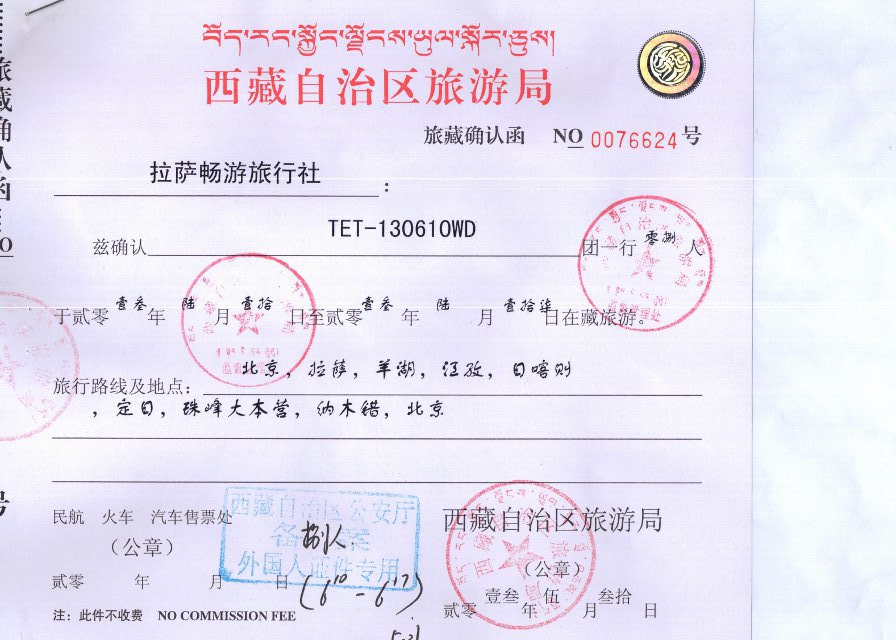
Other Tibet Permits and Travel Documents
When planning a trip to Tibet, be aware that certain places and attractions may require additional permits. In addition to the Tibet Travel Permit, you may need a Tibet PSB permit, Military Area Entry Permit, and/or Foreign Affairs Permit.
To visit 'unopened' areas in Tibet, such as Mount Everest Base Camp, Mount Kailash, some monasteries in Tsedang, and the regions of Nyingchi, Chamdo, and Nyinghci, you will need an Aliens' Travel Permit, also known as the PSB permit. Your guide will help you apply for this permit upon arrival in Lhasa, which usually takes a few hours.
Visitors planning to travel to military-sensitive areas in Tibet, such as Mount Kailash in Ngari or Rowok Lake in Chamdo, require a Military Area Entry Permit. Moreover, certain border areas, such as Mount Kailash and far-western Tibet, require both a Military Area Entry Permit and a Foreign Affairs Permit. The Military Area Entry Permit is issued by the military affairs office, while the Foreign Affairs Permit is issued by the Foreign Affairs office in Lhasa. To visit Tholing and Tsaparang in western Tibet, you'll need a permit from the local Cultural Antiquities Department. The application for these permits can take up to 10-15 working days, normally your travel agency will submit your permit application about one month before your scheduled arrival in Tibet.
Additional Tips:
- Residents of Hong Kong or Macau do not need a Tibet Travel Permit to travel to Tibet. They can travel to Tibet using their HK/Macau SAR Passport and Home Return Permit.
- Indian nationals planning to visit Mount Kailash, Manasarovar, or other parts of Ngari in western Tibet must book their tour through a registered Nepali or Indian travel agency that has cooperation with the Foreign Affairs Office of the Tibet Autonomous Region (TAR) or the Tibet-India Pilgrim Reception Center. For Indian passport holders who wish to visit other parts of Tibet, they can book a tour with any registered travel agency, who will apply for the necessary permits on their behalf.
- Taiwanese who plan to visit Tibet must obtain both a Tibet Travel Permit and a Mainland Travel Permit for Taiwan Residents (MTP).

The best time to visit Tibet is generally from May to October when the weather is mild and pleasant, and the skies are clear, making it ideal for trekking and enjoying stunning vistas. However, the peak summer months of July and August can be crowded with tourists, and prices for accommodations and transportation will increase. July and August are also the monsoon season, it can bring heavy rainfall and potential road closures, making overland travel and trekking challenging.
During the winter months from November to February, Tibet can get extremely cold, with temperatures dropping to well below freezing. While some attractions in Far West may not be accessible, Lhasa and central Tibet offer a unique cultural experience, with nomad families shopping and worshiping at monasteries. Additionally, the cost of Tibet tours is significantly lower during the winter months due to fewer tourists.

Here is some additional information regarding the best time to visit specific regions and attractions in Tibet:
- Lhasa and Central Tibet: The best time to visit Lhasa and Central Tibet is from April to October when the weather is generally mild and dry. This period also coincides with many festivals and events, providing a unique opportunity to experience Tibetan culture and traditions. However, it's also worth considering a winter Tibet tour as it can offer a unique cultural experience. During the winter months, many nomad families came to Lhasa for shopping and visiting monasteries to worship, and the lack of tourists can provide a more authentic and immersive experience.
- Mount Everest Base Camp: The best time to visit Mount Everest Base Camp is from April to May and September to November when the weather is generally dry and stable. During these months, the skies are clear, and the views of the mountain are breathtaking. It is also the expedition season for climbers attempting to summit Mount Everest.
- Tibet Nepal Friendship Highway: The best time to do the overland travel along this Highway is from April to June and September to November when the weather is mild and dry, and the road conditions are relatively stable. July and August are the rainy months, and the roads can be more challenging to navigate due to potential landslides. In the winter months, from December to March, the roads along the Tibet Nepal Highway can be closed due to heavy snowfall and icy conditions.
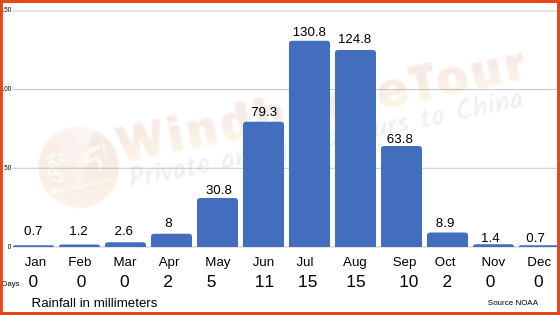
- Mount Kailash and Far West Tibet: The best time to visit Mount Kailash is from May to October when the weather is relatively mild and dry, and the roads leading to the mountain are open. The Saga Dawa Festival is held around June/July and is a major attraction for visitors. It's important to note weather can be unpredictable at Mount Kailash, with sudden changes in temperature, especially at higher elevations like the Droma-la pass during the Kailash Kora, snowfall can occur in the middle of summer.
- Trekking in Tibet: The best time for trekking in Tibet is from late April to early October when the weather is mild and dry. However, during the monsoon season in July and August, heavy rainfall and significant temperature drops can occur, particularly in the evening. Therefore, it's essential to have warm clothing and suitable gear to ensure a comfortable and safe trekking experience.
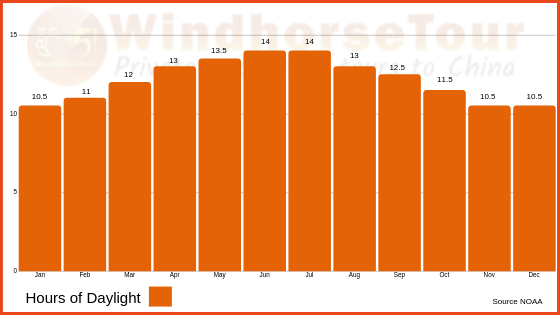
Overland travel from Sichuan/Yunan to Tibet: The best time for overland travel from Sichuan or Yunnan to Tibet is from April to November, when the weather is usually mild and dry. However, during July and August, the region experiences monsoon season with heavy rainfall and potential road closures. It's important to be aware of this and prepared for unexpected changes, such as delayed or cancelled trips due to weather-related issues.

How to get to Tibet
When planning a trip to Tibet, travelers often ask two common questions: 'How do I get to Tibet?' and 'What is the easiest way to get to Tibet?' With its remote location and unique terrain, getting to Tibet can be a challenging task. Therefore, it is essential to understand the different transportation options and entry points available to make an informed decision and plan your itinerary accordingly. For first-time visitors who may be unfamiliar with the Tibet's geography and transportation infrastructure, knowing the easiest way to get to Tibet can be particularly helpful.

Getting to Tibet by air: Major cities in mainland China offer direct flights to Lhasa, making it a popular and convenient option for travelers. Chengdu is a popular entry point for tourists, thanks to its frequent daily flights to Lhasa and Nyingchi, which provide a quick and easy connection to Tibet. Additionally, other major Chinese cities, such as Beijing, Xi'an, Shanghai, Chongqing, and Guangzhou, also offer direct flights to Lhasa.
These flights generally take between 2 to 6 hours, depending on the departure city. Flying to Tibet can save time compared to traveling by train, but it's essential to keep in mind that the sudden change in altitude upon arrival may increase the risk of altitude sickness for some travelers. It's a good idea to allow some time for acclimatization once you reach Lhasa, especially if you're prone to altitude sickness or have never been to high-altitude destinations before.

Getting to Tibet by train: The Qinghai-Tibet Railway, running from Xining to Lhasa, is the sole railway connection to Tibet. As the world's highest railway, the Tibet train reaches altitudes exceeding 5,000 meters (16,400 feet) above sea level. This train journey provides travelers with a unique opportunity to observe some of the most breathtaking landscapes, including snow-capped mountains, vast plains, and the awe-inspiring Tanggula Pass. The train is equipped with a specially designed oxygen supply system and large windows, ensuring a comfortable journey as you ascend into the thin air of the Tibetan Plateau.
The train from Xining to Lhasa covers a distance of approximately 1,972 kilometers (1,225 miles), and the journey takes around 21 to 24 hours. In addition to Xining, there are direct trains to Tibet from other major Chinese cities such as Beijing, Shanghai, Guangzhou, Chengdu, Chongqing, and Lanzhou. These trains all pass through Xining, and their journeys take longer hours due to the additional distance from their starting points.
Accommodation options on the Tibet trains include hard seats, hard sleeper cabins, and soft sleeper cabins, catering to different preferences and budgets. Throughout the journey, passengers can also purchase meals and snacks from the train's dining car.
- Hard seats: they are the most affordable option but may be less comfortable for long journeys.
- Hard sleepers: They provide a more comfortable experience with bunk beds arranged in tiers. Each cabin typically has six berths, with no door for added privacy. This option is budget-friendly while still allowing passengers to rest during the journey.
- Soft sleepers: They are the most comfortable and luxurious option, featuring four berths per cabin with a lockable door for increased privacy.
Traveling from Xining to Lhasa by train is not only an unforgettable experience, but it also allows passengers to gradually adjust to the high altitude, minimizing the risk of altitude sickness.
Insider tips:
- Train tickets are usually sold about 30 days before the train's departure date.
- During the peak tourist season (July to early October), train tickets to Tibet will be in high demand. It's highly recommended to book the tickets through the same travel agency that you book your tour with.

Getting to Tibet by road: Road travel to Tibet is also an option, with four major highways leading to Lhasa, including the Sichuan-Tibet Highway (G318 and G317), Qinghai-Tibet Highway (G109), Yunnan-Tibet Highway (G214), and Xinjiang-Tibet Highway (G219). Although the overland journey can take longer, ranging from a few days to over a week depending on the route and stops, it offers breathtaking scenery and an unforgettable experience.
The Sichuan-Tibet Highway and Yunnan-Tibet Highway are particularly popular for their stunning landscapes and rich cultural experiences. The Sichuan-Tibet Highway stretches over 2,142 kilometers (1,330 miles) and takes you through diverse ecosystems, from lush forests to snow-capped mountains, while offering opportunities to visit important Tibetan monasteries and historical sites.
The Yunnan-Tibet Highway, also known as the 'Southern Silk Road', spans approximately 2,250 kilometers (1,400 miles) and connects the Yunnan Province with the Tibetan Plateau. This route allows travelers to explore the ancient Tea Horse Road, enjoy the breathtaking views of the Meili Snow Mountain and the Great Bend of the Jinsha River.
Traveling by road allows you to witness diverse landscapes, pass through numerous ethnic villages, and visit fascinating cultural sites along the way. It's a great way to immerse yourself in the region's rich history, culture, and natural beauty. However, road conditions can be challenging, and some sections may be impassable during the rainy season or due to landslides.
For those considering this option, it's essential to be well-prepared and arrange your trip with a reliable tibet travel agency. They can help you with the necessary permits, transportation, and accommodations, ensuring a safe and enjoyable journey to Tibet. Remember to allocate enough time for acclimatization and rest during your overland adventure, as you'll be traveling through high-altitude areas.

How to Travel from Nepal to Tibet
Traveling from Nepal to Tibet is another popular choice among adventure-seekers and offers a unique experience through the breathtaking Himalayan region. There are two main ways to get to Tibet from Nepal: by air and by road.
- Get to Tibet by plane from Nepal: Flying from Nepal to Tibet is the fastest and most convenient option. Direct flights are available from Kathmandu in Nepal to Lhasa in Tibet. The flight duration is approximately 1.5 hours, and current flights are operated by Himalaya Airlines. During the tourism season from April to October, there are about 3 fights per week (Mon. Wed. and Fri.) operated to accommodate the increased demand from travelers. Be sure to book your flights in advance to secure a seat during this popular travel period.
- Get to Tibet by road from Nepal: The overland journey from Nepal to Tibet is a more adventurous and scenic alternative, allowing travelers to witness the stunning landscapes of the Himalayas up close. The overland travel from Kathmandu to Lhasa via Gyirong border takes about 4 to 5 days, you will travel most of the time along the Tibet Nepal Friendship Highway including stops at Tibet Mount Everest Base Camp, the 2nd largest city - Shigatse and the ancient town Gyantse, etc. For adventure seekers, another popular route is the overland journey from Kathmandu to Mount Kailash. This pilgrimage route not only offers a unique and spiritually enriching experience but also breathtaking views in the far west of Tibet, including vast grasslands, snow-capped mountains, nomadic groups, and an abundance of wildlife.
Insider Tip when you travel from Nepal to Tibet:
- If you travel to Tibet from Nepal, you don't need to arrange Chinese visa in advance but the travel agency that you book the tour with will assist you to get the China Group Visa in Kathmandu at your arrival. Please leave yourself 4-5 days in Kathmandu for this visa process before boarding on the road. However, if you're a foreign citizen eligible for visa-free travel to China, you don't need to apply for a Group China visa in Kathmandu.

How many days do you need to visit Tibet?
The number of days you need to visit Tibet depends on your interests, the places you want to visit, and the time you have available. Here is a rough idea of how many days you need for your Tibet tour:
- If you're only visiting Lhasa and nearby attractions, then 4-5 days will be enough. This includes the arrival and departure days, as well as 2-3 full days to explore Lhasa city highlights, and possibly a day excursion to a nearby attraction such as Yamdrok Tso Lake or Ganden Monastery.
- If you plan to travel beyond Lhasa, but within Central Tibet, then consider a 6-10 day tour. This will give you time to visit places like Gyantse, Shigatse, and Yarlung Valley, and maybe head to Namtso Lake beyond Lhasa highlights.
- For a trip that includes Tibet Everest Base Camp or travel further to Kathmandu in Nepal, you'll need 8-10 days. This includes the Lhasa city visit and acclimatization before you head for the overland travel.
- To visit Mount Kailash and Lake Manasarovar, you should plan a trip of 12-15 days. To travel further to Zanda Guge Kingdom ruins and cross the wilderness of Changthang Plateau, you'll need to plan a trip of 16-22 days.
Top Things to Do in Tibet
Tibet is an extraordinary destination, boasting a unique blend of natural wonders, rich cultural heritage, and vibrant traditions. Regardless of the type of tour you choose, your trip to Tibet promises to be an unforgettable experience. The region offers a wealth of attractions for tourists to discover. We've compiled a list of the must-visit attractions in Tibet for every traveler to explore during their journey. To further enhance your experience, consider choosing from a diverse selection of over 60 expertly crafted Tibet Tours, designed by our professional travel advisors to accommodate various travel preferences.

Top things to do in Lhasa
Lhasa, the capital of the Tibet Autonomous Region in China, is situated at an altitude of 3,650 meters (11,975 feet) above sea level, making it one of the highest cities in the world. As a significant hub for Tibetan Buddhism and the political, economic, and cultural center of Tibet, Lhasa draws travelers from around the globe with its rich heritage and breathtaking landscapes.
The city is home to several important and sacred Buddhist sites, including the Potala Palace, Jokhang Temple, and the "Great Three" Gelug monasteries – Drepung, Sera, and Ganden. Barkhor Street, a vibrant area encircling Jokhang Temple, offers a glimpse into the daily lives of Tibetans and serves as an excellent place to shop for traditional crafts and souvenirs.
For those looking to explore Tibet, Lhasa serves as the perfect starting point, providing easy access to the region's diverse attractions and experiences. Must-visit attractions in Lhasa include:
Potala Palace - A World Heritage Site
Potala Palace, one of the most renowned spiritual sites in the world, boasts a rich history spanning over 1,300 years. Originally constructed by the Tibetan King Songtsen Gampo as a symbol of love for his bride, Princess Wencheng of the Chinese Tang Dynasty, the palace later served as the winter residence for the Dalai Lama. Today, Potala Palace functions as a museum, preserving and showcasing Tibet's fascinating cultural heritage.
The palace comprises more than a thousand rooms, and within its walls, visitors can discover a vast collection of painted scrolls, over 650 exquisite murals, and thousands of intricate statues adorned with precious jewels. These magnificent displays serve as a testament to Tibet's artistic and spiritual legacy.
The Potala Palace was listed as a World Heritage site by UNESCO in 1994.
Visitors have an hour to explore the captivating interior and experience its uniqueness. To maintain the palace's sanctity and preservation, photography is not permitted inside.

Jokhang Temple and Barkhor Street
Jokhang Temple, considered the holiest temple in Tibet, boasts a rich history that stretches over 1,000 years. Built during the Tubo Dynasty, the temple is a unique architectural masterpiece, showcasing an intricate fusion of Chinese, Tibetan, and Nepalese styles.
Situated on Barkhor Street in the heart of Lhasa's old town, Jokhang Temple serves as an ideal starting point for leisurely walks and cultural exploration. As you stroll through the bustling streets - Barkhor Street, you can immerse yourself in the vibrant local Tibetan culture, witness the devotion of pilgrims, and appreciate the rich heritage of the area.
Jokhang Temple was included on UNESCO's World Heritage list as part of the Potala Palace in 2000.

Norbulingka Summer Palace
Norbulingka, which means 'Jewel Park' in Tibetan, was built in the 18th century by the seventh Dalai Lama, Kelsang Gyatso, and was used as a summer residence by successive Dalai Lamas.
Norbulingka is a UNESCO World Heritage Site, covering 36 hectares with buildings, pavilions, lakes, and stunning gardens divided into four sections representing different regions of Tibet. The palace also houses precious Tibetan cultural relics such as the Dalai Lama's throne room, murals, paintings, and Tangkas.
Today, Norbulingka serves as a museum, showcasing Tibetan history and culture to visitors. It is also used for the Tibetan Shoton Festival, which includes an opera festival as one of its main events.

'Great Three' Gelugpa Monasteries in Lhasa - Sera Monastery, Drepung Monastery, and Ganden Monastery.
These monasteries play a significant role in Tibetan Buddhism and are known for their rich history, architectural splendor, and cultural significance.
- Sera Monastery: Founded in 1419 by Jamchen Chojey, a disciple of Tsongkhapa, Sera Monastery is renowned for its lively monk debates held in the afternoons. These debates offer visitors a unique opportunity to gain insight into Tibetan Buddhist education and practice.
- Drepung Monastery: Established in 1416 by Jamyang Choge Tashi Palden, another disciple of Tsongkhapa, Drepung Monastery was once one of the largest monasteries in the world, housing thousands of monks. Visitors can explore its remarkable architecture, historical artifacts, and the Ganden Palace, which served as the Dalai Lama's residence before Potala Palace was constructed. Drepung Monastery is also famous for the annual Shoton Festival, which features the unveiling of a giant thangka painting of Buddha.
- Ganden Monastery: Founded by Tsongkhapa himself in 1409, Ganden Monastery holds a special place in the Gelugpa tradition. Located about 45 kilometers (28 miles) from Lhasa, the monastery offers stunning views of the surrounding valleys. It is an important pilgrimage site for Tibetan Buddhists, as it houses Tsongkhapa's preserved body and various sacred relics.
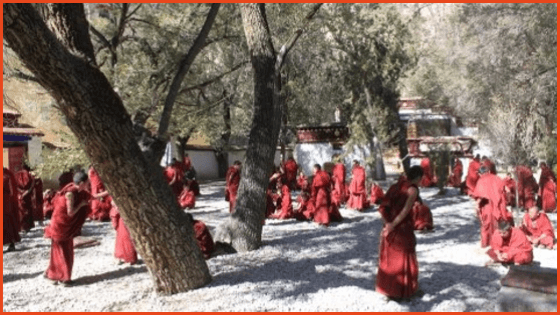
Drak Yerpa Monastery
For a unique and tranquil experience, consider taking a day trip to Drak Yerpa Monastery, a revered meditation site located approximately 16 kilometers (10 miles) northeast of Lhasa. The complex consists of ancient meditation caves that have been used by several important Tibetan Buddhist figures over the centuries. As you explore the caves and monastery, you can enjoy breathtaking views of the surrounding valleys and immerse yourself in the peaceful atmosphere, perfect for contemplation and reflection.

Two largest sacred lakes near Lhasa: Namtso & Yamdrok tso Lake
In Central Tibet, there are two significant holy lakes revered by both Buddhists and the local people for their spiritual significance and natural beauty. These lakes are Lake Namtso and Yamdrok Lake .
Namtso Lake - The highest saltwater lake in the world
Namtso Lake, also known as Heavenly Lake, is the largest lake in Tibet and the highest saltwater lake in the world at 4,718 meters above sea level. It covers an area of 1,940 square kilometers.
Visitors to Namtso Lake are captivated by the breathtaking views of the snow-covered mountains, the turquoise water, and the stunning sunrises and sunsets.
The best time to visit Namtso Lake is between June and September, when the weather is most favorable. From December to March, the road to the lake is typically closed due to heavy snowfall, making it inaccessible during these months.
Namtso Lake is about 250 kilometers away from Lhasa. The travel time is around 4 to 5 hours by car, depending on road conditions and traffic. You can travel to Namtso Lake in one day or make it a 2-day tour if you plan to have a more relaxing trip and enjoy the stunning sunset and sunrise at the lake. A visit to a nomad family in their tent home along the way should not be missed in summer. This unique experience offers a rare glimpse into the daily lives and traditions of Tibetan nomads.
Our 5 day Lhasa highlights with Namtso Lake tour will offer you an enjoyable way to see Lhasa's highlights and one day travel to Namtso Lake.

Yamdrok Tso Lake - A Breathtaking Turquoise Freshwater Holy Lake Near Lhasa
Yamdrok Tso Lake, also known as Yamdrok Yumtso, is a breathtakingly beautiful and sacred freshwater lake situated about 110 kilometers southwest of Lhasa. It is the most visited holy lake by tourists and remains accessible throughout the year. The lake covers an area of 638 square kilometers and is nestled at an altitude of approximately 4,441 meters above sea level. With its stunning turquoise hue, Yamdrok Tso takes the shape of a coiling scorpion and is surrounded by picturesque snow-capped mountains.
In Tibetan Buddhism, Yamdrok Tso Lake is believed to be a sacred dwelling place of wrathful deities who protect Tibet and its people. Pilgrims often make a kora, or a circumambulation, around the lake, which is believed to bring good karma and purify one's sins.
A day tour to Yamdrok Tso Lake can also include a short detour to visit Samding Monastery, located near the lake. Samding Monastery is believed to be the only monastery in Tibet headed by a female reincarnation. The monastery is perched on a hill overlooking the lake and offers stunning views of the surrounding mountains.
Our 5 days Lhasa - Yamdrok Lake tour (local family visit) will offer you 2 days to see Lhasa's highlights and a day travel to Yamdro Tso Lake and visit a local family at the lake side.

Yarlung Valley in Central Tibet - the cradle of Tibetan civilization
Yarlung Valley is often referred to as the cradle of Tibetan civilization, as it is believed to be the birthplace of the Tibetan people and the site of their earliest settlements. Located about 170km away from Lhasa, this region is indeed a must-visit for anyone seeking a deeper understanding of Tibet's rich heritage and Buddhism. The valley also offers breathtaking landscapes, with lush agricultural fields, traditional villages, and the mighty Yarlung Tsangpo River. The major attractions in the Yarlung Valley include:
- Yumbulagang Palace: Believed to be the first palace built in Tibet, Yumbulagang Palace is perched on a hilltop overlooking the Yarlung Valley. According to legend, it was constructed for the first Tibetan king, Nyatri Tsenpo, in the 2nd century BCE. The palace was later transformed into a monastery and houses beautiful murals depicting the history of Tibet.
- Trandruk Monastery: One of the earliest Buddhist monasteries in Tibet, Trandruk Monastery, dates back to the 7th century. It is famous for its stunning thangka, a sacred Buddhist artwork made with pearls, which depicts the image of Chenrezig, the Buddha of Compassion.
- Samye Monastery: Located about 30 kilometers (18 miles) from Tsedang, the Samye Monastery is the first Buddhist monastery in Tibet, founded in the 8th century by King Trisong Detsen. The monastery is designed as a mandala, a representation of the Buddhist cosmos, and features a combination of Tibetan, Chinese, and Indian architectural styles.
- Tombs of the Tibetan Kings: A collection of ancient burial mounds dating back to the 7th century, the Tombs of the Tibetan Kings are the final resting place of several Tibetan emperors, including the famous Songtsen Gampo.
Our 5 days Lhasa and Samye cultural exploration will offer you 2 days to see Lhasa's highlights and a day tour to visit Yarlung Valley.

The Overland Tour from Lhasa to Kathmandu along the Friendship Highway
The overland trip from Lhasa to Kathmandu along the Friendship Highway is a spectacular journey through the heart of the Himalayas, offering breathtaking landscapes, fascinating cultural experiences, and unforgettable memories. This epic route stretches approximately 1,200 kilometers and usually takes 5/6 days to complete, depending on the stops and activities included. Highlights along the way includes:
- Yamdrok tso lake - A sacred turquoise lake surrounded by snow-capped mountains
- Gyantse old city: Gyantse is a small town in the Tibet, is an important stop on the popular travel route between Lhasa and Shigatse. Located at an altitude of around 3,977 meters (13,050 feet), Gyantse is known for its well-preserved traditional Tibetan architecture and charming old town, which offers a glimpse into the region's rich history and culture. The town is home to several significant historical and religious sites, which include: Gyantse Dzong, Pelkor Chode Monastery and Kumbum Stupa
- Tashilhunpo Monastery in Shigatse: located in Shigatse, the second-largest city in the Tibet, is one of the most important monasteries in Tibetan Buddhism. Founded in 1447 by the first Dalai Lama, Gendun Drup, Tashilhunpo Monastery is the traditional seat of the Panchen Lamas, who are considered the second-highest spiritual leaders in the Gelugpa sect of Tibetan Buddhism, after the Dalai Lamas.
- Sakya Monastery: Located in the town of Sakya, this monastery is the principal seat of the Sakya school of Tibetan Buddhism. It is known for its massive fortress-like architecture, extensive library of religious texts, and impressive collection of thangkas and murals.
- A detour to Tibet Everest Base Camp: known as the North Base Camp, it is one of the highlights along the Overland Tour from Lhasa to Kathmandu, offering a closer view of the world's highest peak.
Our 8-day Mt. Everest Base Camp overland tour from Lhasa to Kathmandu covers all the highlights of the Tibet-Nepal Friendship Highway, including a 2-day visit and high-altitude acclimatization in Lhasa prior to the overland journey.

Mount Kailash, Lake Manasarovar & Far Western Tibet
Mount Kailash and Lake Manasarovar are considered the most sacred mountain and lake in the world by millions of people from different faiths. A pilgrimage to Mount Kailash and Lake Manasarovar is considered a life-changing spiritual journey for those who undertake it. These two spiritual sites are located in the remote Ngari Prefecture in the far western Tibet.
- Mount Kailash: Standing at 6,638 meters (21,778 feet) above sea level, it is considered sacred in several religious traditions, including Hinduism, Buddhism, Jainism, and the ancient Bon religion of Tibet. Mount Kailash is believed to be the abode of Lord Shiva in Hinduism and the center of the universe in Buddhist cosmology. Each year, thousands of pilgrims undertake the challenging Kailash Kora, a 52-kilometer (32-mile) circumambulation around the sacred mountain, which usually takes 3 days to complete. The Kailash Kora is believed to cleanse sins and bring spiritual enlightenment. The Saga Dawa Festival is an important event at Mount Kailash, celebrating the birth, enlightenment, and death of Buddha during the fourth lunar month of the Tibetan calendar (usually in May or June). It attracts pilgrims from various faiths to participate in the festivities and the Kailash Kora, making it the best time for travelers to witness the unique cultural and religious traditions of Tibet.
- Lake Manasarovar: Located just about 50km away from Mount Kailash, it is another sacred lake in Tibet. Mansarovar Lake lies on a high elevation of 4,500 meters and covers an area of approximately 320 square kilometers (123 square miles). It is believed to be the source of four major rivers, including the Brahmaputra, Sutlej, Karnali, and Indus. The lake is known for its stunning turquoise color and peaceful surroundings. Pilgrims visit the lake to perform rituals and take a dip in its holy waters, believed to purify the soul. Visitors can also ride horses by the lakeshore, climb to Chiu Monastery and have a stunning bird view of the lake.
Mount Kailash and Lake Manasarovar attract thousands of pilgrims and travelers from all over the world. The best time to visit Mount Kailash is from May to October.
In addition to these sacred destinations, the region of Far Western Tibet (Ngari) is full of natural wonders, cultural treasures, and unique experiences, including:
- Guge Kingdom Ruins: Located about 250km northwest of Mount Kailash, the ruins are all that remain of the ancient Guge Kingdom, a powerful political and cultural center in Tibet from the 10th to the 17th century. This site is a popular destination for history buffs and adventurers alike.
- Zanda Clay Forest: Also known as the Zanda Earth Forest, it is a unique geological formation located in Zanda County, right next to Guge Kingdom Ruins. The 'forest' is made up of towering spires, steep cliffs, and otherworldly rock formations that resemble trees. The site is particularly stunning at sunset when the warm light of the sun illuminates the intricate patterns and textures of the rock formations.
- Crossing the wilderness of Changthang Plateau: A vast plateau in northern Tibet, known as the Changthang Plateau, is home to several nomadic communities. Visitors can see a multitude of high-altitude lakes, snow-capped mountains, and unique wildlife. Crossing the wilderness of Changthang Plateau can be an incredible adventure for those seeking an off-the-beaten-path experience.
Our most popular tour to Mount Kailash is the 15 days Mt. Kailash Kora and Mt. Everest Base Camp tour, which includes a detour to Mount Everest Base Camp. This tour offers an incredible opportunity to explore two of the most iconic destinations in Tibet.
If you plan to visit Mount Kailash from Kathmandu in Nepal, the 11 days Mount Kailash Kathmandu overland tour is a better choice for you.
For a more in-depth and adventurous experience, the 22-day Mount Kailash and Crossing Tibet Changthang tour is the right one for you.
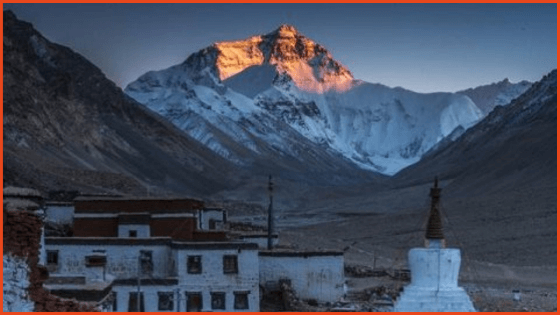
Visiting Mount Everest Base Camp, a fantastic journey with stunning views
For adventurers and mountaineers, Mount Everest Base Camp (EBC) is often considered a Mecca. While many travelers are familiar with the Everest Base Camp in Nepal, fewer are aware that there is also a North Base Camp located in Tibet, with an elevation of 5200 meters above sea level. It is the starting point for climbers who want to ascend Mount Everest from the north side.
Mount Everest Base Camp in Tibet is located in the Rongbuk Valley at an altitude of 5,150 meters (16,900 ft), 80km off the Tibet Nepal Friendship highway and 600km away from Lhasa, it is only can be accessible by road.
The tour from Lhasa to Mount Everest Base Camp typically lasts for 8-9 days, including 2 days to visit Lhasa's highlights (also the acclimatization) and 4/5 day overland tour. The length of the road tour may vary depending on the number of stops and activities included. Most Tibet Everest Base Camp tours from Lhasa include visits to breathtaking sites such as Yamdrok Lake, Gyantse, Shigatse, and Sakya Monastery. At Gawu La Pass after Tingri you will enjoy a panoramic view of the Himalayan mountain range and at Rongbuk, you will get up close to the awe-inspiring north face of Mount Everest.
The trek to the Everest Base Camp in Tibet is less known than the South Base Camp in Nepal, but it offers a unique cultural experience and stunning views of the Tibetan plateau. The trekking to the base camp typically starts from the small town Old Tingri Tingri and takes about 3 days to reach Rongbuk Monastery, the closest point to see Mount Everest in Tibet, covering a distance of 60km. The trek to the North Base Camp is less physically demanding than the trek to the South Base Camp, but it requires travelers to acclimatize to the high altitude.
Please note that since 2019, travelers are not permitted to travel further to the Everest Base Camp on the Tibet side due to environmental concerns and the accumulation of garbage. The closest point that is open to visitors is the Rongbuk Monastery, which is located about 8 kilometers away from the Everest Base Camp. The monastery still offers stunning views of the Mount Everest north face.
The best time to visit Mount Everest Base Camp is from April to May and September to November when the weather is generally dry and stable. During these months, the skies are clear, and the views of the mountain are breathtaking.

Trekking in Tibet
Trekking in Tibet is a truly unique and rewarding experience that offers a chance to explore some of the world's most beautiful and remote regions while immersing oneself in ancient culture and spirituality.
- Breathtaking Scenery: Trekking in Tibet provides an opportunity to witness some of the most stunning landscapes on Earth, including the snow capped mountains, pristine lakes, and remote valleys. Trekking in Tibet is one of the best ways to truly experience the beauty of this land.
- Rich Culture and History: Tibet is home to a unique and ancient culture with a rich history that is evident in the region's numerous monasteries, temples, and historic sites. Trekking in Tibet offers a chance to witness firsthand the daily lives, customs of Tibetans, and their deep spiritual practices.
- Spiritual Significance: Tibet is home to many of the world's most revered spiritual sites, including Mount Kailash. Trekking in Tibet can be a deeply spiritual experience for those seeking to connect with their inner selves and the natural world.
- Physical Challenge: Trekking in Tibet is a physically challenging endeavor due to the region's high altitude and rugged terrain. However, the rewards of the trek, including stunning scenery and unique cultural experiences, make the challenge worth it.
Top 3 Popular Tibet (T.A.R) Trekking Tours:
Ganden to Samye trekking is a popular and moderate to difficult trek in central Tibet that takes you through some of the most scenic and remote areas of the Tibetan plateau. The trek covers a distance of approximately 60 km and takes around 4-5 days to complete.
The trek starts from the Ganden Monastery, about 60 km away from Lhasa. The monastery is situated on a mountain ridge overlooking the Kyichu Valley and offers stunning views of the surrounding peaks and valleys.
The trek takes you through high mountain passes, rugged terrain, and remote valleys. You will also get to experience the unique Tibetan culture and hospitality as you interact with some nomad families along the way, who are in their camps for the summer.
The trek ends at the Samye Monastery, which is located in the Yarlung Valley. The most suitable months to do Ganden to Samye Trek is from May to September.

The Mount Kailash Trekking (also called Kailash Kora) is a spiritual trek around the sacred Mount Kailash. This trek is one of the most popular pilgrimages in the world and draws thousands of devotees every year. Mount Kailash Kora starts and ends in the small town Darchen, covers a distance of 52 km and takes around 3 days to complete. The trek is challenging, as it takes you through high altitude passes (the highest one is Drolma La Pass with 5,630m high) and rugged terrain. However, the stunning natural beauty and spiritual significance of the area make it an unforgettable experience. Many pilgrims believe that completing the Kora will bring them good fortune and cleanse their sins.
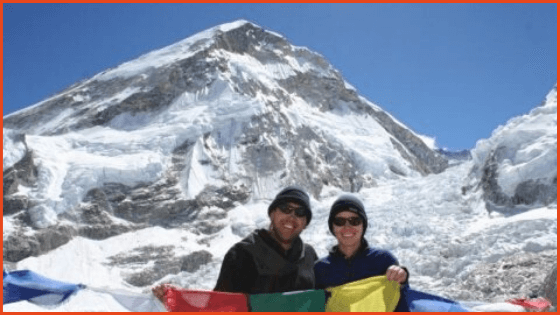
Tsurphu to Yangpachen Trek is another popular and challenging trek near Lhasa in Tibet. It is an excellent trek for those who want to get a close look at the Tibetan herders and their semi-nomadic lifestyle. The trek covers a distance of around 40 km and takes 3 days to complete.
Tsurphu to Yangpachen trek begins at Tsurphu Monastery. This rugged walk crosses several alpine valleys before emerging into the broad and windswept Yangpachen valley. This is a high elevation trek exceeding 4400m for the entire duration and a maximum elevation of 5300m at the Lasar-la. Combining alpine tundra and sweeping mountain panoramas with visits to monasteries and a nunnery, this trek nicely balances cultural and wilderness activities.
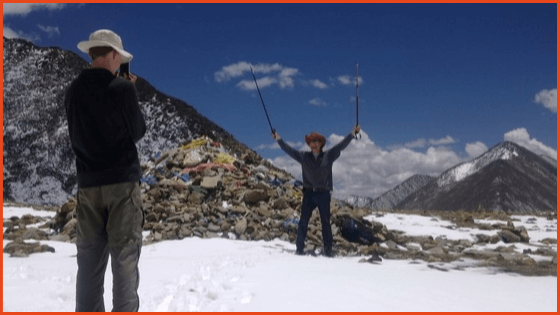
Other popular Tibet trekking routes in Tibet:
- Tibet Mount Everest Base Camp Trek - Trek from Old Tingri to Rongbuk in 3 Days covering a distance of 60km.
- Tibet Trekking from Shalu Monastery to Nartang Monastery - Short 2 Day Trekking near Shigatse
- Tibet Gama Valley Trekking - 8 Days Trekking in the Eastern Slope of Mt. Everest
- Tibet Everest Advanced Base Camp Trek (ABC Trek) - 5/6 days Trekking to Everest Advanced Base Camp from Rongbuk - Need special climbing permit for this Trek
- The Kharta Valley & Everest Kangshung Face Trek - 8/9 day trek from Kharta valley to Everest Kangshung Face through Gama Valley
Other trekking available in Greater Tibet including Tibetan areas in Qinghai & Sichuan:
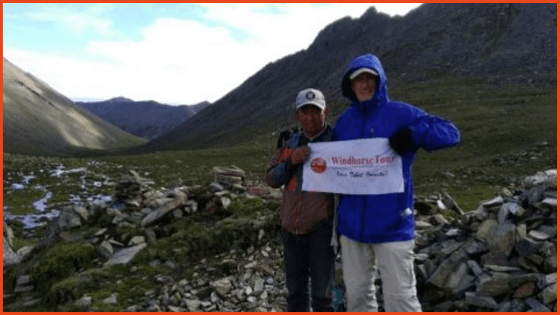
Insider Tips for Trekking in Tibet
A trekking in Tibet requires good physical condition, well preparation and strong perseverance.
To help you make the most of your journey, here is a list of insider tips for trekking in Tibet:
-
Acclimatize properly: Due to Tibet's high altitude, it's essential to acclimatize before starting your trek. Spend a few days in Lhasa or another high-altitude place to allow your body to adjust to the thin air.
-
Choose the right season: The best time to trek in Tibet is from May to early October when the weather is relatively stable, and the temperatures are more comfortable. Monsoon season, from June to August, can be wet, but it's still a viable option if you're prepared for occasional rain.
-
Stay hydrated and eat well: High altitudes can cause dehydration, so be sure to drink plenty of water throughout your trek. Also, maintain a balanced diet to keep your energy levels high.
-
Pack smart: Bring layers of clothing to adjust to fluctuating temperatures and a reliable pair of hiking boots. Don't forget essential items like sunscreen, sunglasses, a hat, a first aid kit, medicines prescribed by your doctor and an oxygen bottle for emergencies.
-
Be prepared for the unexpected: Weather conditions can change rapidly, and trails can be more challenging than expected. Embrace the adventure and be open to adapting your plans as needed.
-
Purchase travel insurance: Accidents can happen, and it's wise to have travel insurance that covers medical expenses, evacuation, and trip cancellation or interruption.
-
Learn some basic Tibetan phrases: Learning a few simple phrases in the local language can go a long way in making connections with the people you encounter during your trek.
By keeping these insider tips in mind, you'll be well-equipped to make your trekking experience in Tibet a memorable and rewarding one. Read more detailed information for How to plan a Trekking in Tibet
Porter service is an essential choice for any traveler with heavy luggage
Due to the high altitude in Tibet and challenging trails, it is recommended to hire a porter service. Many trekkers fail to reach their destination because of the weight of their baggage. Therefore, it is highly advisable to entrust your luggage to a porter service, which will load it onto yaks or horses and accompany you to the camp sites.
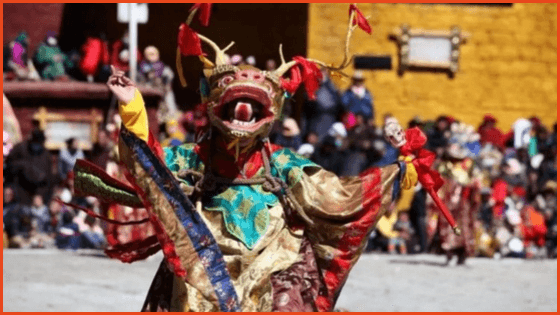
Travel to Tibet during the Tibetan Festivals
Tibetan festivals are a major attraction for many travelers who choose to visit Tibet. These vibrant celebrations offer visitors an unparalleled opportunity to experience and participate in the rich cultural heritage and ancient traditions of Tibet. By planning a trip to Tibet during one of its many festivals, travelers can immerse themselves in the local customs, observe unique ceremonies, and connect with the warm and hospitable Tibetan people.
Below are the three most significant and popular festivals in Tibet, offering exceptional opportunities to immerse oneself in Tibetan culture and traditions.
Tibetan New Year Festival (Losar)
Losar (Tibetan New Year) is the most significant festival in Tibet, marking the beginning of the Tibetan lunar calendar. It usually falls between late January and early March and lasts for 15 days, with the first three days being the most important. The festival offers a great opportunity to experience Tibetan culture, as locals engage in various rituals, prayers, and ceremonies. Traditional activities include house cleaning, hanging prayer flags, and making offerings to deities and ancestors. People also enjoy feasting on traditional Tibetan food and beverages, and participate in traditional music, dance, and other cultural performances. If you travel during the Tibetan New Year, you are likely to be invited by your Tibetan tour guide to their home, allowing you to have a unique experience of this cultural festival.
In 2025 Tibetan New Year will begin on February 28th in the Gregorian calendar.

Saga Dawa Festival
The Saga Dawa Festival is one of the most important religious festivals in Tibet, celebrating the birth, enlightenment, and passing of Buddha Shakyamuni. This month-long festival begins with the new moon of the fourth month and ends with the full moon the following month. In the Gregorian calendar, it typically falls between late May and June. The 15th day of the fourth month, known as Saga Dawa Düchen in Tibetan, is the holiest day of the year for Tibetan Buddhists. During Saga Dawa festival, practitioners focus on generosity, virtue, and compassion to accumulate greater merit. It is believed that the merits of one's actions are multiplied during this month and hugely increased on the 15th day.
The festival provides a unique opportunity to witness Tibetan Buddhist practices and rituals, such as circumambulating sacred sites like Potala Palace, Jokhang Temple, and Mount Kailash. Devotees engage in almsgiving, lighting butter lamps, abstaining from meat, and releasing captive animals to accumulate merit.
One of the best places to visit during Saga Dawa is Mount Kailash, which attracts thousands of pilgrims. A new flagpole is erected at the base of the mountain every year on the 15th day of the fourth Tibetan month. This is an excellent time to travel to Mount Kailash and join pilgrims in Kailash Kora, a holy circumambulation around the mountain.
If you cannot visit Mount Kailash during the festival, Lhasa is another great place to experience the festival atmosphere. Join pilgrims in circumambulating with locals, engage in almsgiving on Lingkor Road, or visit Tsurpu or Drigung Til monasteries to watch the famous Cham Dance.
In 2024, the Saga Dawa Festival will begin on May 23, according to the Gregorian calendar.

Shoton Festival
The Shoton Festival, also known as the Yogurt Festival, begins on the last day of the sixth month of the Tibetan calendar, usually falling in August or early September in Gregorian calendar. The week-long festival originally started as a religious observance, with people offering yogurt to monks who had completed their summer meditation retreat. Today, it has evolved into a broader cultural celebration featuring Tibetan opera, music, and dance performances. The festival begins with the unveiling of a giant thangka (Buddhist painting) at Drepung Monastery, followed by the opera performance at Norbulingka Summer Palace. If you happen to visit Lhasa during the Shoton Festival, join locals in the park for a picnic while watching opera.
In 2024 Shoton festival will begin on August 4. Check out our 2024 Shoton Festival tour.
Other popular festivals in Tibet are: The Butter Lamp Festival, Tashilhunpo Thankga Festival, Gyantse Horse Racing Festival, Nagqu Horse Racing Festival etc..
Popular Tibetan Festival in Greater Tibet (Sichuan/Qinghai/Yunnan): Horse Racing Festivals in Litang and Yushu, Shaman Festival in Rebkong in Qinghai, Mask Dance (Cham Dance) Festivals in Ganzi Tibetan area Kham, Amdo Tibetan Monlam festival.

Altitude sickness and how to stay healthy during your Tibet trip
Altitude sickness, also known as acute mountain sickness (AMS), is a common problem encountered by travelers at high altitudes, typically above 8,000 feet (2,438 meters). It arises when the body doesn't have enough time to adapt to the decreased oxygen levels and changes in air pressure.
Tibet's average altitude is 4,500 meters (14,760 ft) above sea level, with Lhasa situated at 3,650 meters (11,975 ft) above sea level. Due to the region's high elevations, it is common for travelers to experience moderate symptoms of altitude sickness during their first few days in Tibet. Common moderate symptoms include headache, dizziness, nausea, vomiting, fatigue, shortness of breath, and difficulty sleeping.
If you experience symptoms of altitude sickness, it's essential to take the necessary precautions to alleviate them. Make sure to rest, stay well-hydrated, consume healthy foods and carbohydrates, avoid rushing or engaging in strenuous activities, and most importantly, remain calm. Typically, the symptoms will subside within two or three days as your body acclimates to the high altitude.
Tips to reduce the risk of altitude sickness in your Tibet Travel
To minimize the risk of altitude sickness and stay healthy during your travel in Tibet, we suggest that you follow these tips:
- Gradual acclimatization: Acclimatize slowly by spending a few days in Lhasa or another moderately high-altitude place in Tibet before proceeding to higher elevations. Increase your sleeping altitude gradually, no more than 1,000 feet (300 meters) per day.
- Stay hydrated: Dehydration can worsen altitude sickness. Drink plenty of water and avoid alcohol, caffeine, and tobacco, which can contribute to dehydration.
- Eat a balanced diet: Consume meals rich in carbohydrates, as they provide energy and help your body adjust to the altitude. Avoid heavy and fatty foods that can be difficult to digest.
- Pace yourself: Avoid overexertion and intense physical activities, especially during the first few days of acclimatization. Slow down and listen to your body.
- Ascend and descend wisely: If you experience symptoms of altitude sickness, it's important not to ascend any further until you feel better. If your symptoms worsen, descend to a lower altitude immediately.
- Medication: Talk to your doctor about medications like acetazolamide (Diamox) that can help prevent or reduce the severity of altitude sickness. However, never rely solely on medication as a substitute for proper acclimatization.
- Recognize the symptoms: Common symptoms of altitude sickness include headache, dizziness, nausea, vomiting, fatigue, shortness of breath, and difficulty sleeping. If you notice any of these symptoms, take appropriate action to prevent the condition from worsening.
- Oxygen supplementation: In some cases, using supplemental oxygen can help alleviate symptoms of altitude sickness. Consult with your tour guide or travel agency to determine if this is a viable option for you.
- Get travel insurance: Ensure you have travel insurance that covers medical emergencies and evacuation at high altitudes.
- Consult a healthcare professional: Before embarking on your travel to Tibet, talk to your doctor about your health and fitness level, and discuss any pre-existing medical conditions that might increase your risk of altitude sickness.
Who should not travel to Tibet?
Certain individuals may face increased health risks at high altitudes and should reconsider traveling to Tibet. These include people with pre-existing medical conditions such as heart disease, severe asthma, lung disease, uncontrolled hypertension, or sickle cell disease. Pregnant women, particularly in their third trimester, and individuals with a history of altitude sickness, HAPE, or HACE should exercise caution.
Additionally, young children, especially infants, elderly individuals with pre-existing medical conditions, and people with sleep apnea might be at risk. It is crucial to consult a healthcare professional before planning a trip to Tibet if you fall into any of these categories.

Accommodation in Tibet
Accommodation in Tibet varies from budget guesthouses to luxury hotels depending on locations. In the capital city Lhasa, you will find the best accommodations in Tibet, such as St. Regis Lhasa Resort and Lhasa Shangri-La Hotel. There are also other fine, featured Tibetan hotels with good locations, and if you have a tight budget, there are plenty of guesthouses available. In secondary cities and towns such as Shigatse and Bayi town in Nyingchi, options range from budget guesthouses to luxury hotels. In smaller towns like Gyantse, Tsedang, Sakya, and Darchen, expect more budget hotels and guesthouses. At Everest Base Camp, during the Mount Kailash tour, and when crossing the wilderness of Changthang Plateau, accommodations are quite basic and may involve shared rooms. Please note that accommodation standards in Tibet may differ from other parts of the world. For example, a four-star hotel in Shigatse cannot be compared to a four-star hotel in Beijing, as there is a massive difference in the amenities that both star-rated hotels can offer.
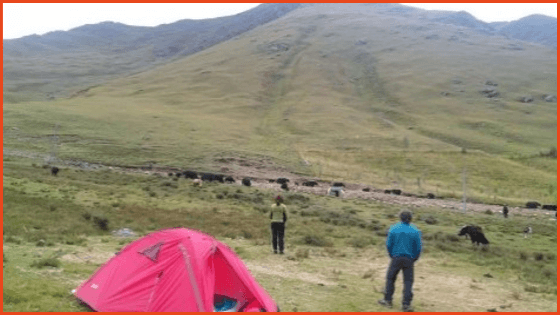
Accommodation during Tibet trekking
During the trekking in Tibet, accommodation options are generally more basic, ranging from tent camps to monastery guesthouses and home stays. Tent camps are required for most of Tibet trekking tours, and your travel agency will usually provide tents and sleeping pads. Basic monastery guesthouses are available at Mount Kailash Kora. In some remote areas, home stays with local families offer an authentic cultural experience, but amenities are minimal. Be prepared for basic facilities, shared spaces, and limited services for your stay during the Tibet trekking. Essential items to pack for your Tibet trekking should include a high-quality sleeping bag, headlamp, personal hygiene items, and necessary medications.

What to eat and drink in your Tibet Tour
Experiencing local cuisine is essential when traveling to Tibet, as it reflects the Tibet’s culture, history, and traditions. Traditional Tibetan food primarily consists of barley and yak products, the most common Tibetan food includes Tsampa (roasted barley flour, yak butter, and tea mixed into a dough), Momos (steamed dumplings filled with meat or vegetables), and Thugpa (a noodle stew with meat and/or vegetables). Tsampa is the staple food of Tibetan people – ask your guide to show you how Tsampa is mixed with tea in a bowl. Momos are highly addictive, and Thugpa is an excellent comfort food. Check with your guide for the fresh Tibetan yogurt as it is made from yak milk and has superb taste. In Lhasa, you can find authentic Tibetan restaurants that serve excellent Tibetan food. Additionally, there are Nepalese, Indian, Chinese (mostly Sichuan food), and Western food options available in Lhasa.
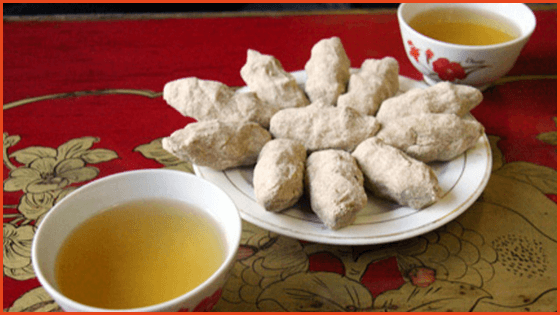
When traveling outside of Lhasa in Tibet, larger towns and cities such as Shigatse, Gyantse and Tsedang offer a variety of food choices, including Tibetan, Nepali, Chinese and Western cuisine. However, in smaller towns or villages, traditional Tibetan food may be less common, you will find more Chinese restaurants offering different types of cuisine, mainly Sichuan dishes. At Everest Base Camp, Rongbuk monastery guest house offers some simple food for dinner and breakfast which includes banana pancakes, toast, eggs and noodles, tea and coffee also available.
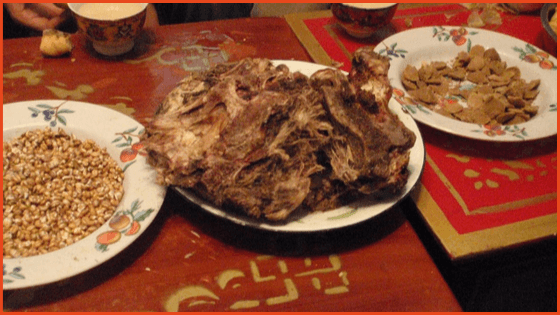
Favorite drink to the Tibetans is the butter tea, it is a salty blend of tea leaves, yak butter, milk, and salt. Butter tea is considered a staple drink in Tibet, especially in rural areas where the climate can be harsh. It is believed to provide warmth and energy, making it a perfect beverage for those who spend long hours working in the cold. In addition to its taste and nutritional benefits, butter tea is also an important part of Tibetan culture and hospitality, as it is often served to guests as a sign of respect and friendship. While it may not suit everyone's taste, it is customary for Tibetans to serve tea continuously as a sign of hospitality. You can sip the tea out of respect, request refills, or ask for hot water or sweet tea instead.
Tibetan sweet tea is another popular drink made from tea leaves, milk, sugar, and a variety of spices such as cinnamon, cardamom, and ginger. It is known for its warming properties and is a favorite drink among Tibetans, especially during the winter months.
In Lhasa, visitors can find several sweet tea houses that offer a great atmosphere of local culture. These tea houses are a popular spot for locals to relax, socialize, and enjoy a cup of sweet tea.
How much does it cost to travel to Tibet
A trip to Tibet can be quite expensive due to its remote location and limited infrastructure. The cost of a Tibet tour is typically comprised of three main parts: arrival/departure transportation, ground tour costs in Tibet, and personal expenses while touring.
Arrival/departure transportation: The cost of transportation to Tibet varies greatly depending on the origin and mode of transportation. Round-trip flight tickets from mainland China to Lhasa range from USD 800-1000 per person, there are direct flights from Chengdu, Beijing, Chongqing and Xining to Lhasa. Discounted rates of 20-40% off may be available during shoulder season (Nov.-May). Round-trip train tickets from mainland China to Lhasa cost about USD 240-360 per person (varies by hard/soft sleeper), but during peak season, an additional USD 50-100 may be required to book the tickets. Round-trip flight tickets from Kathmandu to Lhasa costs about USD 800-1200 per person.
Tibet Ground Tour: The cost of a Tibet ground tour depends on factors such as tour type (group or private), length and region of travel, number of travelers, type of accommodation, and traveling season. WindhorseTour offers group Tibet tours lasting from 4 to 15 days, with a maximum of 12 travelers per group, based on tourists' standard accommodation.
A group tour of 4 day Lhasa tour costs USD 460-570 per person (varied by shoulder / peak season),
A group tour of 8 day Mount Everest Base Camp costs USD 840-1020 per person,
A group tour of 7 day overland Lhasa to Kathmandu tour costs USD 960-1100 per person,
A group tour of 15 day Mount Kailash tour costs USD 1820-2040 per person.
For a private Tibet tour, the tour cost needs to be calculated based on the number of travelers, the length and attractions that you want to visit, accommodation type and traveling season. We suggest you to contact us for a free quote if you plan to take a private Tibet tour.
Personal expense: When it comes to personal expenses while touring in Tibet, meals are typically not included in the ground tour cost, so you will be responsible for paying for your own meals during the tour. It is suggested to budget around USD 20-30 per person per day for meals, with the cost being slightly higher in remote areas. While tipping the driver/guide is not mandatory in Tibet, it is suggested to prepare a tip of around USD 15 per day based on your satisfaction with their service. It is recommended to tip at the end of the tour. Additionally, you may need to bring some cash for purchasing souvenirs, paying for laundry services, and other miscellaneous expenses.
China visa is not included in the ground Tibet tour and travelers need to apply for an individual Chinese visa in their home country prior to visiting Tibet. For those entering from Nepal, a group Chinese visa is required, which can cost between 80-200 USD per person depending on nationality.

What to pack for your Tibet Tour?
It is essential to know what to pack for your trip to Tibet, considering the high altitude and changing temperatures. You should pack all the necessary equipment, but avoid overpacking and only bring essential items. Additionally, it's important to pack all your needed medication. Above all, make sure not to forget your passport with efficient Chinese visa.
To make packing easier for you, we have compiled a list of recommended items that you should bring for your trip to Tibet.
Clothes and shoes
Even if you are traveling to Tibet in the summer, it's necessary to bring warm clothes due to the significant temperature differences between day and night.
It's advisable to dress in layers that can be easily added or removed as temperatures can fluctuate throughout the day in Tibet.
If you're only visiting Lhasa and nearby attractions for a few days, you don't need to pack any specific clothing, but do add warmer clothes to your standard travel wardrobe. A windbreaker is also advisable throughout the year.
Below is a list of items to pack if your tour includes an overland trip to Tibet but not for trekking.
- A down coat for those who are traveling to areas such as Mt. Kailash, Everest Base Camp or crossing the wilderness of Changthang Plateau.
- Rain gear is advisable to pack every traveler who is going to Tibet.
- T-shirts, both long and short sleeves
- 2 or 3 sweaters are enough
- Hoodie
- Windproof pants: 3-4 water and windproof pants prepared in advance is no doubt the smartest choice.
- Underwear. Make sure that you are wearing comfortable underwear, especially if you are trekking. Your underwear should be woolen, not cotton.
- Woolen or polypropylene socks
- Comfortable hiking boots and shoes are required (you don’t need to wear hiking boots on overland journeys).

Personal Hygiene and Toiletry Items
This is the list of personal hygiene and toiletry items that you should pack for your trip to Tibet.
- Sunscreen, with SPF 35 or higher, because of the high altitude the Ultraviolet rains are very high
- lip balm
- anti-bacterial hand sanitizer
- small hand-held mirror (optional)
- deodorant
- feminine products
- shaving products
- travel size shampoo and soap
- toothbrush and toothpaste
- wet wipes
- toilet paper (toilet paper not provided in many public toilets)
- band-aids and moleskin for blisters
Personal Accessories you must have for your trip:
These are the items that you should also pack, some of them are optional
- Sunglasses with UV protection are must,
- Sunhat,
- Cup,
- Small towel,
- Thermos,
- A water bottle,
- One small bag for dirty clothes.
Optional Accessories
- iPod/iPad/Kindle or your smartphone for entertainment
- batteries for personal items (camera, flashlight, etc.)
- plenty of memory cards for your camera
- an extra copy of your passport and Chinese visa
- Snacks such as protein bars, chocolate, dried fruit or other snacks of your choice
- electric outlet adapters for Tibet

Medicine
- Diamox to prevent altitude sickness,
- Ibuprofen,
- Aspirin, Diphenoxylate, and Prochlorperazine- medicine for cold, headache, stomachache, diarrhea, nausea, insect bite, etc.
- Multivitamins,
- Tylenol or Advil for a headache,
- medicine if you are prone to motion sickness,
- antibiotic ointment for minor cuts or blisters.
First Aid Kit

Your First Aid Kit should include:
- Band-aids or other wound dressings,
- Bandaids for the occasional blister from long walks,
- Alcohol swabs,
- Hydrogen peroxide,
- Cotton swabs,
- Cotton bandages,
- Bandage tape,
- Ace bandage for the twisted ankle that might occur while hiking,
- Small scissors.

Shopping in Tibet
If you're traveling to Tibet, don't miss the chance to experience the unique shopping opportunities there! Barkhor Street around Jokhang Temple and the markets nearby offer a wide range of items that you won't find elsewhere, such as beautiful handicrafts, carpets, religious paintings (known as Thangkas), prayer wheels, and incense. Handmade Tibetan jewelry, wood carvings, and pottery make fantastic souvenirs to bring back home, while the intricate designs and colors of Tibetan carpets are sure to impress. Thangkas, which depict Buddhist deities, and prayer wheels filled with mantras are fascinating and meaningful items that you can take with you to remember your trip. Don't forget to haggle with the vendors to get a good deal, but also make sure that any items you purchase comply with your home country's customs regulations.

Internet Access & Wifi in Tibet
The internet is generally available in most places in Tibet, except for remote areas such as during trekking days. In bigger cities and towns such as Lhasa and Shigatse, most hotels and cafes offer free Wi-Fi, but the connection can be slow and intermittent. It's best to activate your phone roaming service before departing for your Tibet tour. When you arrive in Tibet, you can connect to the local network and use roaming service to make phone calls, send text messages, and access the internet when there is a network available. Another good option is to purchase a local SIM card to have internet access on your phone in a cheaper way.
If you want to use social media platforms like Facebook, Twitter, or Instagram, you will need a Virtual Private Network (VPN). Many travelers can't even log in to their Gmail accounts without a VPN.
Things to Do and Not to Do in Tibet
It is important to know how to visit Tibet without offending the Tibetan Culture and customs. Tibetans have unique traditions that must be observed by travelers. Therefore, it's crucial to know what to do and what not to do during your journey in this incredible region. Here are some tips to help you avoid offending the Tibetan culture:
When visiting the Monasteries
- Wear appropriate clothing.
- Walk clockwise around the monastery.
- Be quiet in the monastery.
- Do not take photos of statues of Buddha.
- Do not smoke.
- Do not touch the books of scriptures or statues of deities.
Other Tips to Remember:
-
Don't take photos of Tibetan people without permission.
- Don't clap your hands in public; it's considered impolite.
- Don't spit in front of or behind others; it's also impolite.
- Don't touch the head of Tibetan people, not even on a child's head.
- Keep quiet at the top of the mountains. Tibetans believe that loud noise brings heavy snow, storms, or hail.
- When offered a yak tea, receive the drink with both hands.
- Tibetans don't eat the meat of donkeys, horses, and dogs, and tourists should avoid doing so as well.
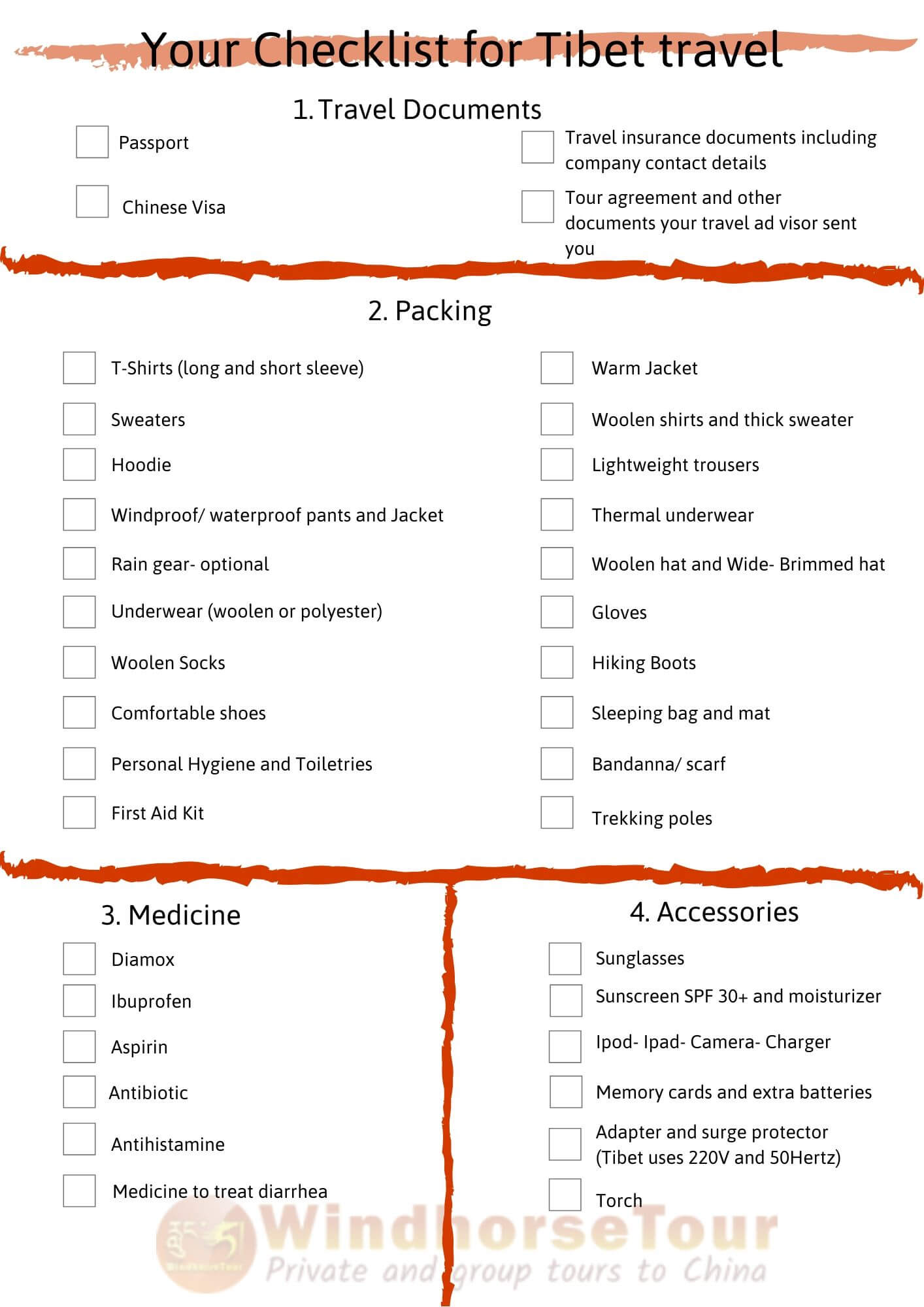


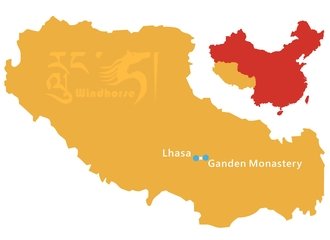
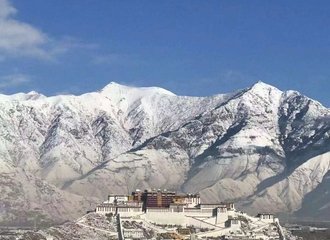
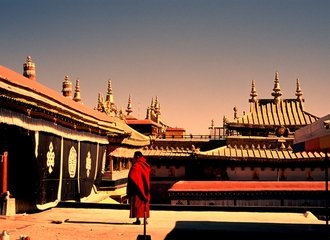
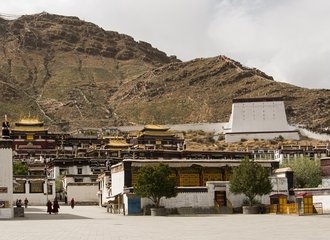
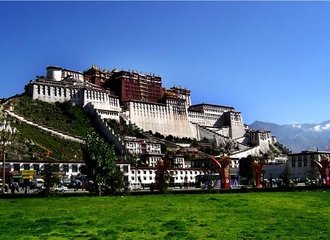
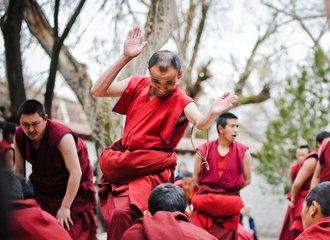
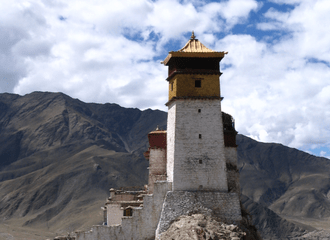
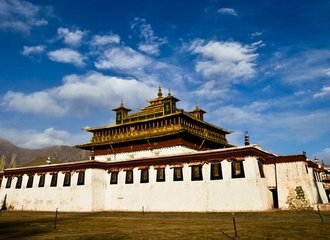
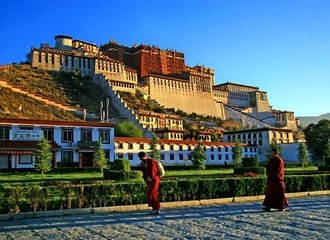
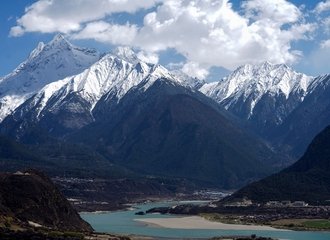
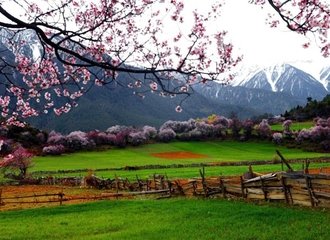
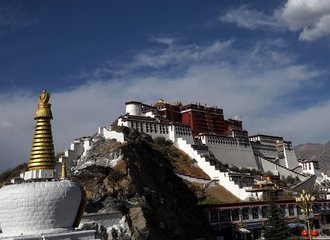

Comments
I shall be looking forward to visit Tibet in the month of either May or September. Kindly do share the best itinerary for the same. I am from India
In reply to I shall be looking forward… by Narendra Lamba (not verified)
Hi Narendra,
Tashi Delek!
Thank you for your inquiry. This is Zoe from Windhorse Tour responding to your email.
I have already sent you the email with detailed itinerary and quotation based on your inquiry, please kindly go through it and feel free to let me know any question you may have.
I am looking forward to hearing from you soon.
Best regards,
Zoe